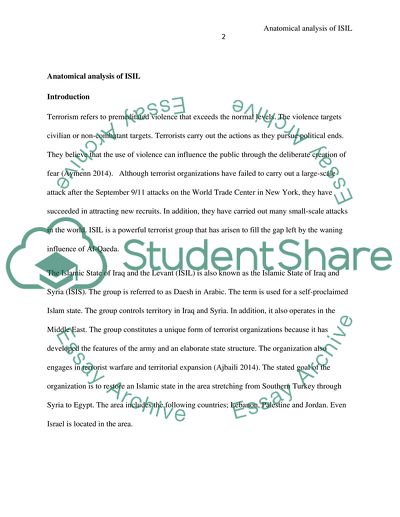Cite this document
(Features Of ISIS Ideology Research Paper Example | Topics and Well Written Essays - 3000 words, n.d.)
Features Of ISIS Ideology Research Paper Example | Topics and Well Written Essays - 3000 words. Retrieved from https://studentshare.org/sociology/1854469-anatomical-analysis-of-terrorist-organizations
Features Of ISIS Ideology Research Paper Example | Topics and Well Written Essays - 3000 words. Retrieved from https://studentshare.org/sociology/1854469-anatomical-analysis-of-terrorist-organizations
(Features Of ISIS Ideology Research Paper Example | Topics and Well Written Essays - 3000 Words)
Features Of ISIS Ideology Research Paper Example | Topics and Well Written Essays - 3000 Words. https://studentshare.org/sociology/1854469-anatomical-analysis-of-terrorist-organizations.
Features Of ISIS Ideology Research Paper Example | Topics and Well Written Essays - 3000 Words. https://studentshare.org/sociology/1854469-anatomical-analysis-of-terrorist-organizations.
“Features Of ISIS Ideology Research Paper Example | Topics and Well Written Essays - 3000 Words”, n.d. https://studentshare.org/sociology/1854469-anatomical-analysis-of-terrorist-organizations.


